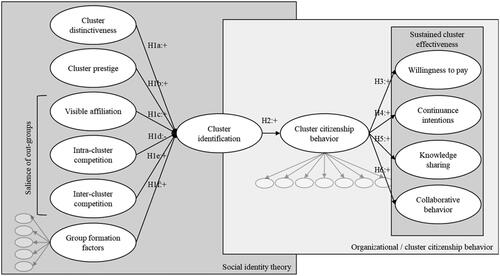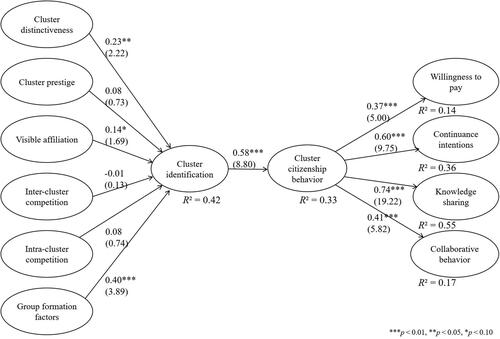Figures & data
Figure 1. Summary of the theoretical model and hypotheses.
Note: Group formation factors and CCB are both modeled as second-order constructs. Group formation factors have the following five dimensions: similarity, interaction, geographical proximity, perceived benefit, and length. CCB has the following seven dimensions: helping behavior; tolerance of mistakes; cluster loyalty; cluster compliance; cluster-supporting initiative; cluster participation; and relationship management.

Table 1. Summary of the predictions and results.
Appendix B. Discriminant validity analysis: Fornell and larcker’s criterion

